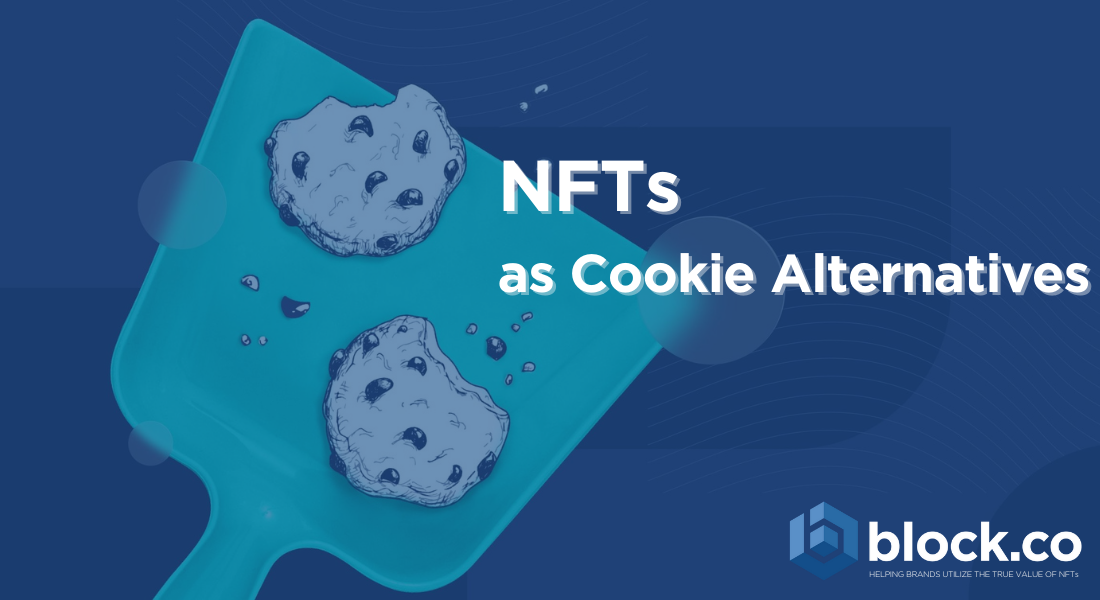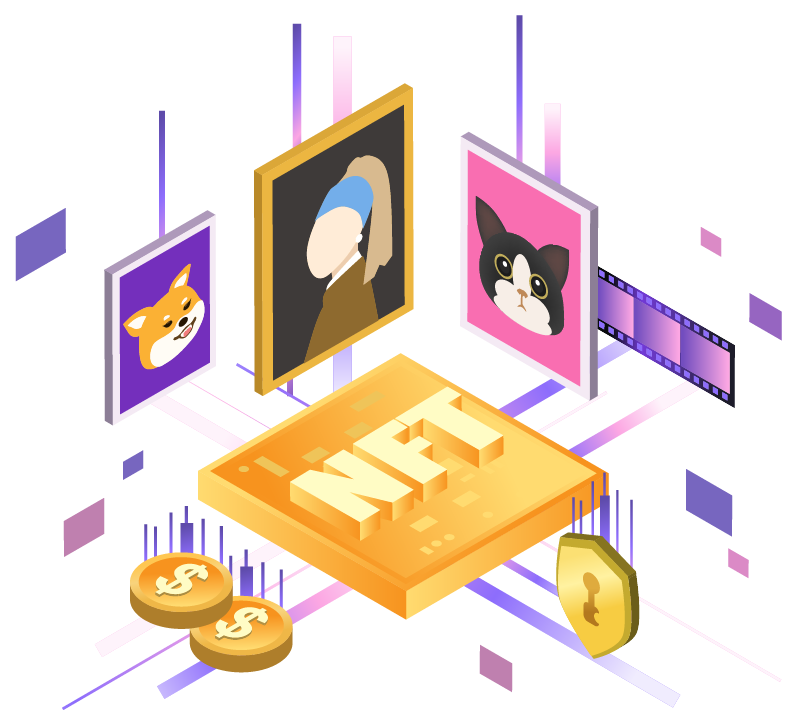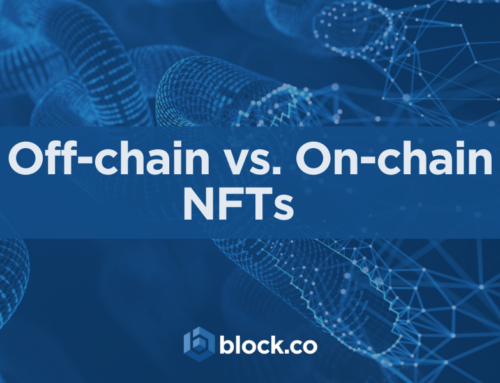NFTs as Cookie Alternatives

Written by George Agathangelou
How are marketers preparing for a cookie-less world? The death of the third-party cookie is fast approaching, and the industry can see the end of the road when it comes to its ability to buy and sell ads that use individualized targeting. Could NFTs be used as a tool by marketers once third-party cookies are eliminated?
But before we delve any deeper, let’s provide some context first.
What are cookies?
Cookies are small files sent to your browser from websites you visit. These files track and monitor the sites you visit and the items you click on these pages.
Cookies are often used to personalize a resource to your preferences, such as storing items in a shopping cart between sessions while you are shopping. Some sites may store some information about you in case you visit again (for example, the selected settings or account login details). Essentially, cookies save you from having to re-enter information.
What cookie types are there?
- First-party cookies are stored within the domain that the user is visiting. The web server sends pieces of data to the browser, and on each subsequent visit to the site, the browser sends them back to the server. So, if you are for example on the xyz.com website, all cookies stored under this domain are considered first-party cookies. These cookies are usually used to identify the user when switching between pages of the site, to remember the settings selected for the site, or — on online shopping sites — to store items added to the shopping cart. It’s hard to find a website that does not use first-party cookies nowadays as 1st party cookies are now used by almost all websites.
- You may have already guessed that a third-party cookie is a cookie created by a different domain than the one you are visiting. Let’s say xyz.com and another site you’ve been visiting have agreed to serve ads to their users. Ads come from one provider whose code is hosted on both domains. When you visit a website, the provider creates a third-party tracking cookie. When you visit other sites, they recognize you by cookies and display the same ads. Essentially, they track your online behavior by building your profile for targeting purposes. No wonder, 3rd party cookies are also known as tracking cookies.
- Second-party cookies are a questionable topic. Some people might say they don’t exist at all. In general, second-party data is some first-party data shared between partners. In this sense, second-party cookies are just part of that data related to cookies.
Why are 3rd party cookies being blocked?
Since the late 1990s, online marketers have built their businesses on the ability to track online users and then target them with advertisements, and much of this has been done by third-party cookies. The two largest online advertising firms, Google Ads and AdSense advocate that 3rd party cookies are useful to consumers as they create advertisements that are in line with individual interests.
With recent legislation such as CCPA, ePrivacyRegulation and GDPR, state actors look to protect the privacy of website users, creating criminal penalties for those who fail to notify web users of the presence of cookies. Moreover, they require operators to inform users of the information being collected and to whom it is shared, with a mechanism to opt out at any time.
These privacy concerns relating to how 3rd party cookies collect user data and pass it to 3rd parties have led to action from regulators and web browsers. Since 2018, the GDPR regulations have set out rules for explicitly gathering user consent for targeted advertising within the European Union. In the same context, the CCPA regulations in California aim to protect the data of users within the state. The Safari and Firefox browsers have already blocked 3rd party cookies and Chrome will block cookies in 2023.
What will happen without third-party cookies?
Brands are ill-prepared for privacy changes that will lock down data in digital marketing, while publishers could lose up to $10 billion in ad revenue when 3rd party cookies are deprecated by late 2024. According to Google, publishers will lose 50–70% of their revenue without a new approach to audience data. According to Adform research, 75% of companies globally believe the removal of third-party cookies will have an impact on their business, but 78% of marketers globally have no tested solution in place for 2022.
What can a marketer do without cookies?
The advertising industry has been testing alternatives to 3rd party cookies, such as identity solutions, Google’s Privacy Sandbox, 1st-Party data, contextual advertising, data pools, digital fingerprinting and others. While all these solutions can help publishers and advertisers serve more relevant ads to users, there is currently no clear winner from the pack. Moreover, the recent developments by Google and Apple suggest device IDs likely don’t have a future.
However, there are some encouraging signs that the ad industry is getting its house in order, with many advertisers calling the preparation for a cookie-less future a top priority for 2022 and some already beginning to shift tactics and budgets away from third-party cookies and toward first-party data and other tactics.
According to 2022 North America Quantcast State-of-the-Industry Report that surveyed more than 600 advertising and publishing professionals, preparing for a world without cookies was one of the top concerns for 6 out of 10 people in the advertising sector (52%). However, there is no universal agreement on the strategies that will work best for developing solutions without cookies. More than half of respondents (57%) believe first-party data will be “foundational,” while 38% believe a contextual approach will be the best course of action. However, 36% believe the best course of action will be a combination of first-party data, contextual, industry IDs, and cohorts.
Suggested proposals are often too technical, even for ad industry figures. Advertisers are still debating which solutions will be most effective in a world without cookies. Some are discussing the merits of cookie alternatives, like IP addresses or universal IDs. The effectiveness, scale and reliability of contextual commerce make it a must-have in this context. It’s one of the only advertising solutions that truly caters to consumer privacy preferences. First-party data is expected to be a major part of this “cookieless” future alongside other approaches.
Perhaps it would be best for publishers to spread their risk by adopting all these solutions and testing to see which ones are most effective. To adjust, brands will need to be strategic and open to experimenting with new ways to target ads. Brands should focus on ramping up earned and own programs as well as contextual advertising. As brands continue adjusting to these privacy-related changes, it’s a slow wind down that allows them time to explore new techniques. New technologies have fostered the creation of NFT and the opportunity that NFTs bring you in conjunction with marketing provides a new ground to explore interactions with consumers. NFTs are trendy, fun, and cutting-edge technology that have the potential to redefine the way brands do business and engage with their consumers. At the same time, NFTs are a new revenue stream and an engagement tool for brands wishing to build on customer loyalty and their willingness to buy a part of the brand’s history.
Although a key factor of crypto is privacy and avoidance of any tying transactions, NFTs fundamentally contradict this objective by their very nature. It becomes trivially simple to discover what else a user’s wallet has been up to if they link an NFT to any aspect of their online or offline identity, such as using an NFT as their Twitter profile picture or keeping a profile on an NFT marketplace. You might wonder why this is a good thing, though. It is advantageous that the user is aware of this and is relying on NFTs as social proof. He wants the world to know that he is supporting a particular project, brand or cause and is signaling his status to the world, just like he would signal his status with a luxury watch or designer garment. These trends may be observed by marketers to advise for the next advertising campaign. NFTs are the next 1t Party Cookies, with the only difference being that the user is in control of his data. He selects when and if he will reveal himself and his achievements to the world. And he will use NFTs to do so.
We need to build and simultaneously educate people. We need to bring standards into play and provide a clear distinction between the categories of NFTs. NFTs as collectible items, NFTs for ticketing and membership passes, staking NFTs in DeFi, pump and dump NFTs, derivative NFTs, fractionalized NFTs and their own distinctive utility in each case, with the main utility starting with provenance and what this specifically entails in the real world. Not all NFTs are the same!
If your brand is ready to take the step into web 3.0 and NFT marketing, to optimize engagement with your audience in innovative ways, then click the button below to get your Free Trial, a limited number of Free NFTs, and a Free Consultation call from our team!
To get more information about block.co’s services, please contact block.co directly or email at enquiries@block.co.
Tel +357 70007828
We regularly post educational materials on our social media, follow us to stay up to date about the latest blockchain and NFT news.







